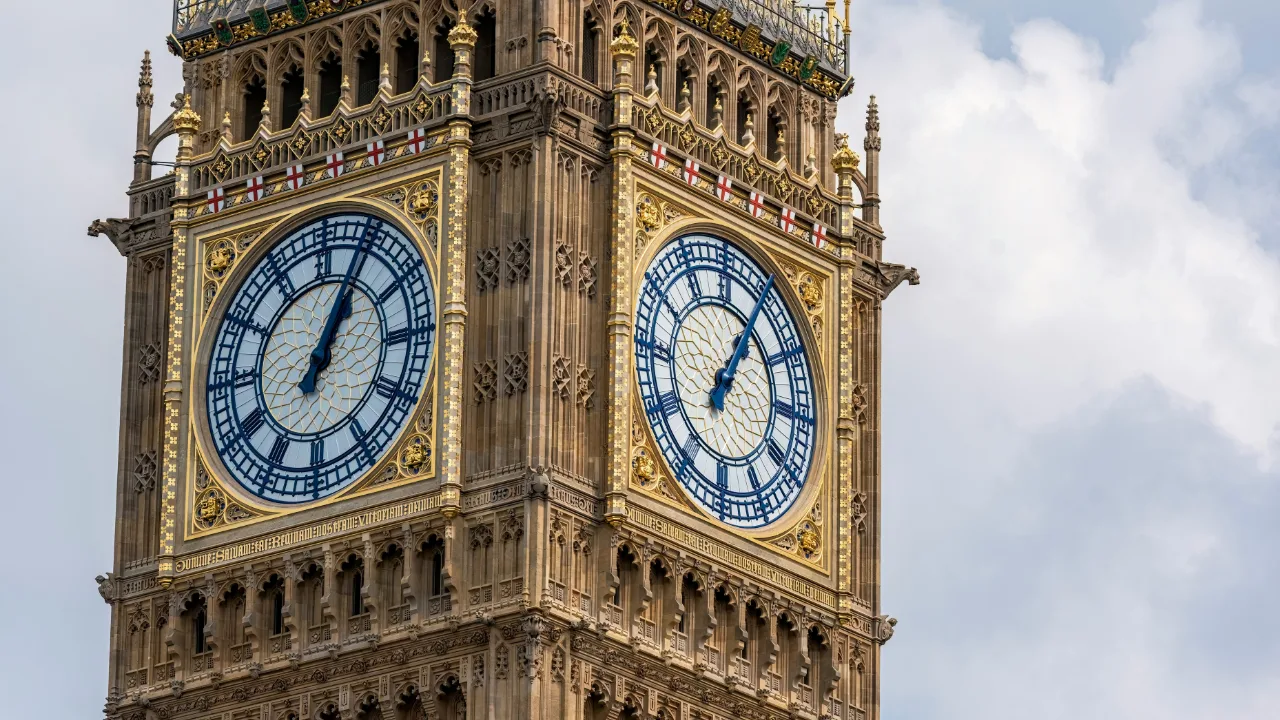The economic statistics for the creative industries speak for themselves
The UK’s Industrial Strategy recognises that the creative industries are a national strength. In 2017, their contribution in current prices GVA is estimated to have exceeded £100bn (5.5% of total GVA) and in the preceding seven years they grew almost twice as fast as the economy as a whole. They account for 2.5 million jobs (6.1% of the UK total) and for 11.9% of non-financial businesses. The creative industries are export-intensive: in 2016, exports of creative services and goods accounted for 11.0% and 4.3% of all UK services and goods respectively.
Yet, headline statistics mask challenges and uncertainties
Behind the rapid growth in output, employment and exports lies much disruption and business uncertainty. Previous research on the growth dynamics of creative industries reveals decreasing average firm size, relatively low numbers of scale-up businesses and increasing concentration in London and the South-East of England. There are well-known weaknesses in areas such as access to finance, talent and productivity. And the structure of the creative industries shapes not only what they produce, but also who can produce it, and who gains from it – in both economic and social terms. There is also strong evidence of the critical importance of historical and locally specific cultural and creative practices.
The rapid growth of digital markets has created myriad opportunities for content and services businesses, giving rise to sectors such as online video games, visual effects and immersive content. But it has also brought major challenges for business models, intellectual property protection, regulation of online markets, digital skills and infrastructure. Social media platforms have very different business models from traditional content businesses. In some markets, the creative industries are becoming a subset of data-intensive industries, where the incentives are not so much for the production of content but for the control of data.
Meanwhile, the ongoing tight fiscal environment in the UK has created pressures on arts and culture funding as well as on public service broadcasting, and a need for cultural institutions to explore new financial models as well as more holistic ways of measuring the value of culture.
In the area of employment, creative businesses often struggle to fill vacancies in skilled technical roles, and there are concerns that degree courses do not change quickly enough to keep up with the pace of technological change. As a result, large vacancy rates for high-end digital roles coexist with high unemployment rates amongst computer science graduates. But there are also more longstanding problems that have bedevilled creative labour markets and which have been neglected by policymakers focused narrowly on headline jobs growth. These include (generally) low wages, job insecurity (associated with freelance work), poor management practices, unpaid internships and persisting socioeconomic, demographic, spatial and ethnic inequalities.
There are also deep-rooted disconnects between traditional industrial policy instruments and the creative industries which constrain the ability of government to support them. These include the area of R&D, where the definitions used by the tax authorities impose a narrow, technical understanding of research and experimental development as the ‘resolution of scientific and technological uncertainties’, excluding advances of knowledge embodied in art, content, or creative experiences.
The benefits to the UK from addressing such policy challenges go beyond the interests of the creative industries. The UK has led the world in promoting and measuring the ‘creative economy’ – that part of the economy where creative talent is deployed for commercial purposes – which includes, but is not restricted to, the creative industries. Research has shown that creative work more generally is more resilient to automation and that, partly as a result, creativity is requiredin occupations that are predicted to grow. Other studies find that firms which transact and partner with creative businesses tend to be more innovative (here and here). This points to the importance of ‘spillovers’ between creative industries and the wider creative economy that policymakers in the UK have yet to grasp.
The creative industries evidence base is also growing, but there are major gaps
As the UK repositions itself after Brexit, we must reconsider the nature of our competitive industrial strengths. How can we retain our reputation as a destination of choice for foreign direct investment, and how can we continue to attract skilled migrants? What are the future international trade priorities from the viewpoint of the creative industries? And what will the answers to these questions mean for the geography of the UK’s creative industries and how will this impact on regional inequality? Policymakers need research and evidence to inform the design of international policies, including trade, investment, migration and regulation – areas where sectoral context and understanding is crucial.
Mirroring the creative industries’ impressive growth figures, there has been growth in academic research on the creative industries. However, major gaps remain in the evidence base. For example, a study of impact case studies relating to the creative and cultural sector submitted as part of the 2014 REF (the system for assessing the quality of research in UK universities), revealed that only 15% reported impacts on economic growth. There is next to no academic research on the creative industries in essential areas like industrial organisation, productivity, R&D, international competitiveness, spillovers, content regulation, business models or risk finance. And while the UK is recognised as an international leader in producing economic statistics on the creative industries, there is now widespread awareness that the Standard Industrial Classification paints a partial and, in some cases, severely distorted picture of industrial reality.
Which is where the Creative Industries Policy and Evidence Centre steps in
The Creative Industries Policy and Evidence Centre (PEC), funded by the Arts and Humanities Research Council through the Industrial Strategy Challenge Fund, seeks to address these shortcomings in the evidence base. We want to bring about a step change in the quality and quantity of evidence used to inform decision-making with respect to the creative industries and policies intended to support them. The PEC’s work activities are organised through five overlapping workstrands, each led by an expert UK research centre, and coordinated through a Management Board, chaired by myself. In addition, we have a Policy Unit which is focused on connecting the research and evidence with policymaking.
Your Centre needs you
We won’t be able to research everything that matters, and we will therefore depend critically on the help of industry, policymakers and other researchers to help us identify priorities. We will keep our research agenda relevant, timely and inclusive. So whether you work in industry, finance, are a policymaker, a researcher or just someone who cares about the creative industries, please take a look at the PEC’s partnership models (Industry, Policymakers and Academia) and we see how you can get involved.
Suggested Reading
Bakhshi, H., Benedikt Frey, C. and Osborne, M. (2015) Creativity vs Robots: The Creative Economy and the Future of Employment, Nesta, available at:
https://media.nesta.org.uk/documents/creativity_vs._robots_wv.pdf [Last accessed March 2019]
Bakhshi, H., Hargreaves, I. and Mateos Garcia, J. (2013) A Manifesto for the Creative Economy, Nesta, available at:
https://media.nesta.org.uk/documents/a-manifesto-for-the-creative-economy-april13.pdf [Last accessed March 2019]
Bakhshi, H., Hope, A., Livingstone, I. and Mateos-Garcia, J.Hope, A. (2011) Next Gen. Transforming the UK into the world’s leading talent hub for the video games and visual effects industries, Nesta, available at:
https://media.nesta.org.uk/documents/next_gen_wv.pdf [Last accessed March 2019]
Bakhshi, H. and Lomas, E. (2017) Defining R&D for the Creative Industries, Nesta, available at:
https://ahrc.ukri.org/documents/project-reports-and-reviews/policy-briefing-digital-r-d/ [Last accessed March 2019]
Bakhshi, H., McVittie, E. and Simmie, J. (2008) Creating Innovation: Do the creative industries support innovation in the wider economy? Nesta, available at: https://media.nesta.org.uk/documents/creative-innovation.pdf [Last accessed March 2019]
CREATe, (2017) [Blog], available at: https://www.create.ac.uk/blog/2017/04/05/cin-launch/ [Last accessed March 2019]
Creative & Cultural Skills, (2017) Building a Creative Nation: Current and Future Skills Needs, available at: https://ccskills.org.uk/downloads/Building_a_Creative_Nation_-_Current_and_Future_Skills_Needs.pdf [Last accessed March 2019]
Creative Industries Council, (2018) Access to Finance, available at: http://www.thecreativeindustries.co.uk/media/471225/cic-access-to-finance-research-report-june-2018.pdf [Last accessed March 2019]
Crossick, G. and Kaszynska, P. (2016) Understanding the value of arts and culture: The AHRC cultural value project, Arts & Humanities Research Council, available at:
https://ahrc.ukri.org/documents/publications/cultural-value-project-final-report/ [Last accessed March 2019]
Department for Digital, Culture, Media and Sport, (2018) DCMS Sectors Economic Estimates 2017 (provisional) Gross Value Added, available at: https://assets.publishing.service.gov.uk/government/uploads/system/uploads/attachment_data/file/759707/DCMS_Sectors_Economic_Estimates_2017__provisional__GVA.pdf [Last accessed March 2019]
Department for Digital, Culture, Media and Sport, (2018) DCMS Sectors Economic Estimates 2017: Employment, available at: https://assets.publishing.service.gov.uk/government/uploads/system/uploads/attachment_data/file/726136/DCMS_Sectors_Economic_Estimates_2017_Employment_FINAL.pdf [Last accessed March 2019]
Department for Digital, Culture, Media and Sport, (2019) DCMS Sectors Economic Estimates 2017 (provisional): Business Demographics, available at: https://assets.publishing.service.gov.uk/government/uploads/system/uploads/attachment_data/file/774472/DCMS_Sectors_Economic_Estimates_2017__provisional__Business_Demographics.pdf [Last accessed March 2019]
Department for Digital, Culture, Media and Sport, (2018) DCMS Sectors Economic Estimates 2016: Trade, available at: https://assets.publishing.service.gov.uk/government/uploads/system/uploads/attachment_data/file/774511/DCMS_Sectors_Economic_Estimates_2016_Trade_final.pdf [Last accessed March 2019]
Easton, E. and Djumalieva, J. (2018) Creativity and the Future of Skills, Creative Industries Policy & Evidence Centre, available at: https://pec.ac.uk/publications/Creativity_and_the_Future_of_Skills_v7.pdf [Last accessed March 2019]
Frontier Economics, (2016) Boosting productivity in the creative industries, available at: https://www.frontier-economics.com/media/2447/boosting-productivity-in-the-creative-industries.pdf [Last accessed March 2019]
Higgs, P., Cunningham, S. and Bakhshi, H. (2008) Beyond the Creative Industries: Mapping the creative economy in the United Kingdom, Nesta, available at: https://media.nesta.org.uk/documents/beyond_the_creative_industries_report.pdf [Last accessed March 2019]
Jones, C. and Maoret, M. (2018) Frontiers of creative industries: Exploring structural and categorical dynamics, Research in the Sociology of Organizations no. 55, pp. 1-16 available at: https://www.research.ed.ac.uk/portal/files/57092477/Jones_Maoret_Intro_Frontiers_of_Creative_Industries_Final.pdf [Last accessed March 2019]
Jones, C., Lorenzen, M. and Sapsed, J. eds (2015) The Oxford Handbook of the Creative Industries, Oxford: Oxford University Press
Mateos Garcia, J., Klinger, J. and Stathoulopoulos, K. (2018) Creative Nation: How the creative industries are powering the UK’s nations and regions, Nesta, available at: https://media.nesta.org.uk/documents/creative_nation-2018.pdf [Last accessed March 2019]
Nesta, (2014) The new art of finance: Making money work for the arts, available at: https://media.nesta.org.uk/documents/the_new_art_of_finance_wv.pdf [Last accessed March 2019]
Oakley, K., Laurison, D., O’Brien, D. and Friedman, S. (2017) Cultural Capital: Arts Graduates, Spatial Inequality, and London’s Impact on Cultural Labour Markets, American Behavioural Scientist, 61(12), pp.1510-1531
O’Brien, D., Laurison, D., Miles, A. and Friedman, S. (2016) Are the creative industries meritocratic? An analysis of the 2014 British labour force survey, Cultural Trends, 25(2), pp. 116-131, available at: http://eprints.lse.ac.uk/66499/1/__lse.ac.uk_storage_LIBRARY_Secondary_libfile_shared_repository_Content_Laurison%2C%20D_Are%20the%20creative%20industries%20meritocratic_Laurison_Are_the_creative_industries_meritocratic.pdf [Last accessed March 2019]
Pratt, A. (2010), Creative cities: Tensions within and between social, cultural and economic development. A critical reading of the UK experience. City, Culture and Society, 1(1), pp.13-20, available at: http://openaccess.city.ac.uk/6657/1/Pratt_2010_tensions.pdf
Related Blogs
What UK Job Postings Reveal About the Changing Demand for Creativity Skills in the Age of Generative AI
The emergence of AI promises faster economic growth, but also raises concerns about labour market di…
Creative PEC’s digest of the 2025 Autumn Budget
Creative PEC's Policy Unit digests the Government’s 2025 Budget and its impact on the UK’s creative …
Why do freelancers fall through the gaps?
Why are freelancers in the Performing Arts consistently overlooked, unseen, and unheard?
Insights from the Labour Party Conference 2025
Creative PEC Policy Adviser Emily Hopkins attended the Labour Party Conference in September 2025.
Association of South-East Asian Nations’ long-term view of the creative economy
John Newbigin examines the ASEAN approach to sustainability and the creative economy.
Take our Audience Survey
Take our quick survey and you might win a National Art Pass.
Culture, community resilience and climate change: becoming custodians of our planet
Reflecting on the relationship between climate change, cultural expressions and island states.
Cultural Industries at the Crossroads of Tourism and Development in the Maldives
Eduardo Saravia explores the significant opportunities – and risks – of relying on tourism.
When Data Hurts: What the Arts Can Learn from the BLS Firing
Douglas Noonan and Joanna Woronkowicz discuss the dangers of dismissing or discarding data that does…
Rewriting the Logic: Designing Responsible AI for the Creative Sector
As AI reshapes how culture is made and shared, Ve Dewey asks: Who gets to create? Whose voices are e…
Reflections from Creative Industries 2025: The Road to Sustainability
How can the creative industries drive meaningful environmental sustainability?
Creating value: the creative economy beyond culture by Marta Foresti
Marta Foresti explains the value of international cooperation as she becomes Chair of the GCEC.












